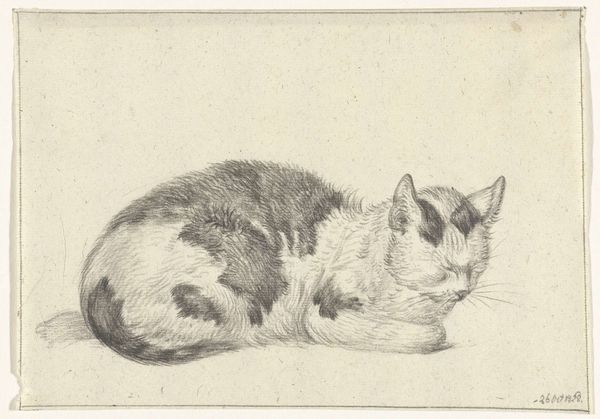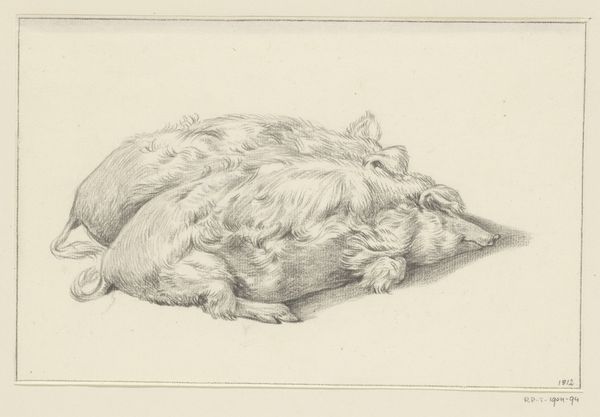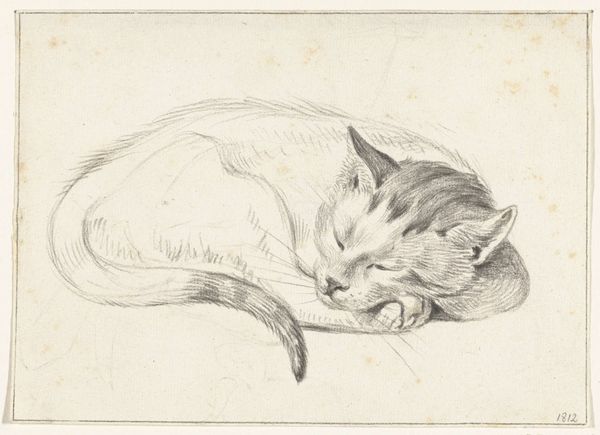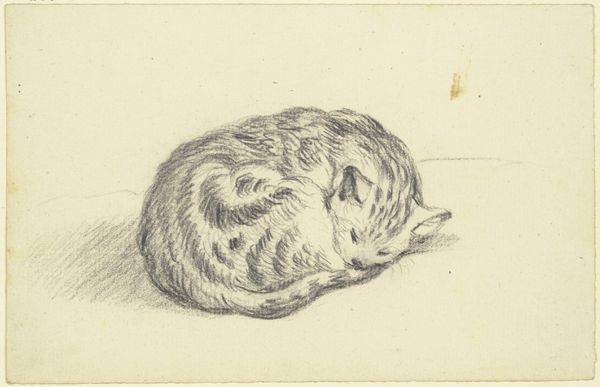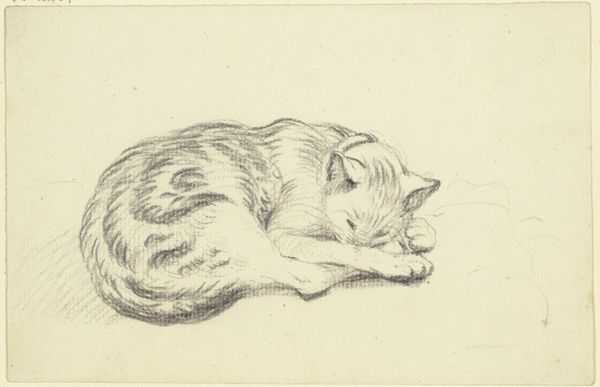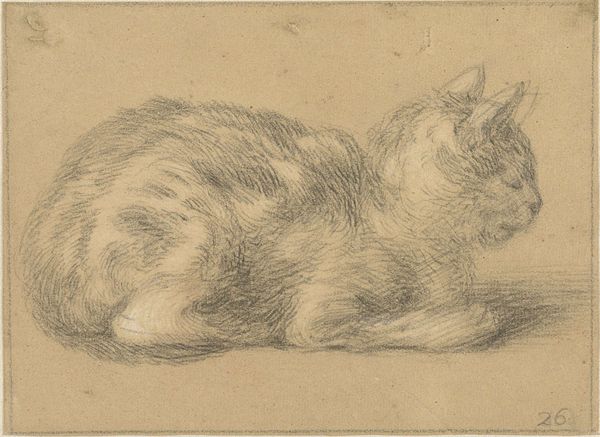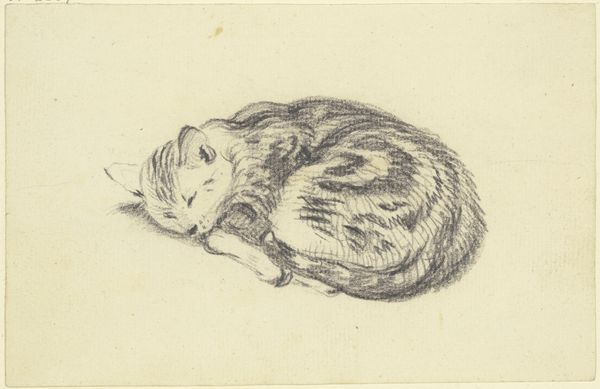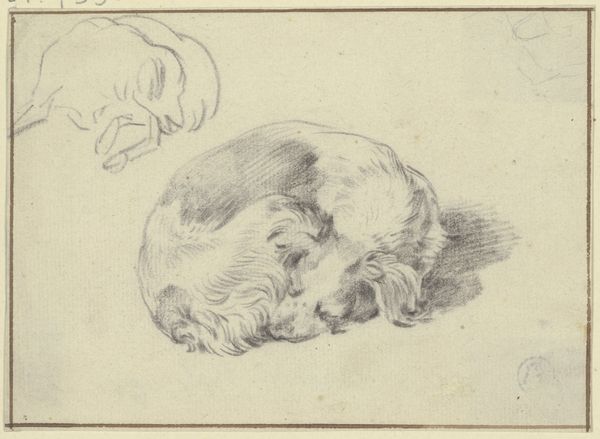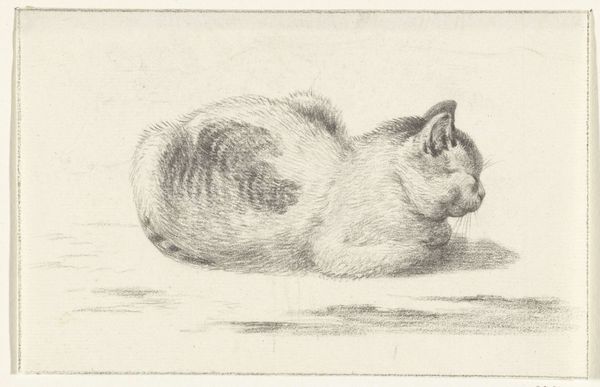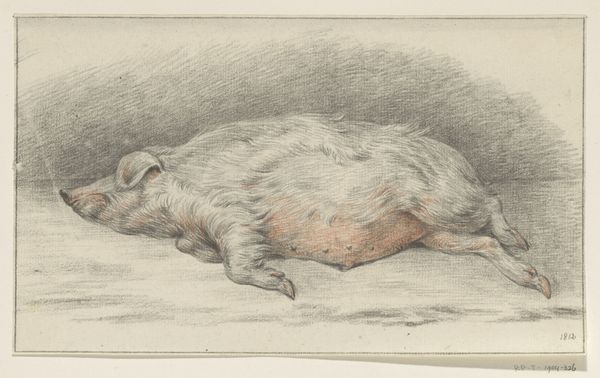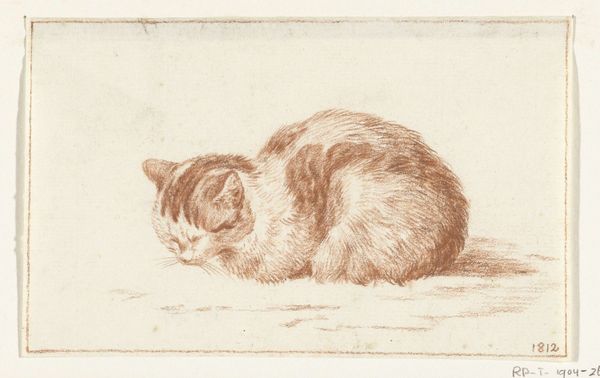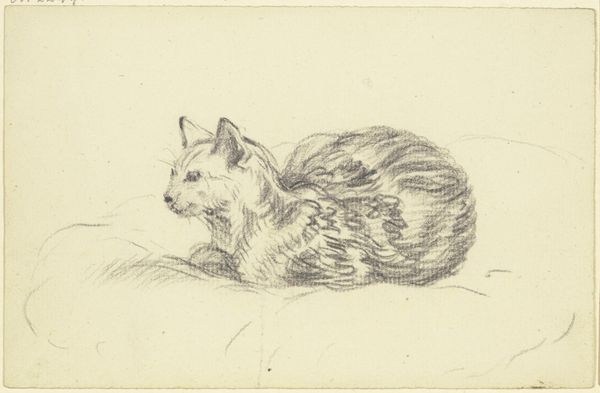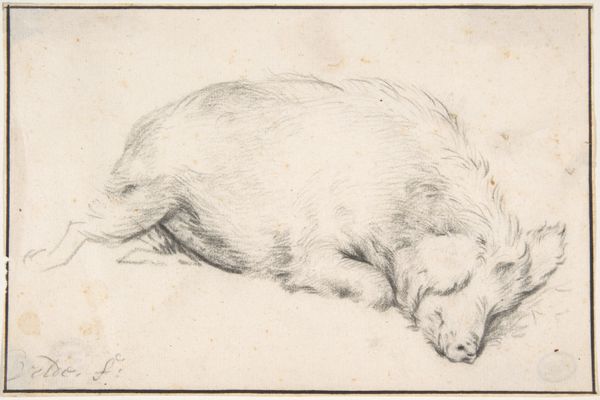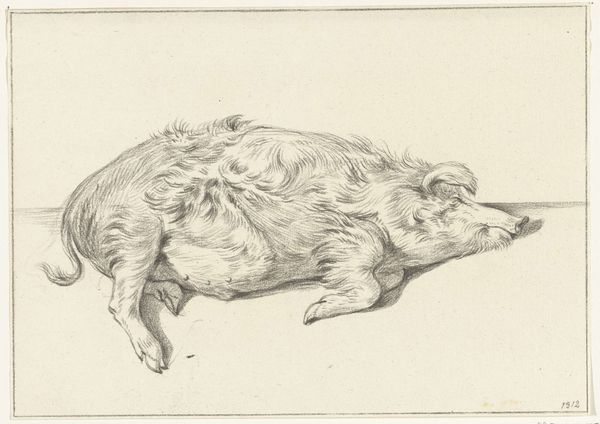
drawing, pencil
#
portrait
#
pencil drawn
#
drawing
#
landscape
#
charcoal drawing
#
pencil drawing
#
pencil
#
realism
Dimensions: height 154 mm, width 245 mm
Copyright: Rijks Museum: Open Domain
Curator: Welcome. Here we have Jean Bernard’s 1812 pencil drawing, "Liggend varken, naar rechts, tegen een beschutting"— "Lying Pig, Facing Right, Against a Shelter." Editor: My initial reaction? It's surprisingly tender. There's a vulnerability in the pig's relaxed pose that disrupts the common associations with livestock. Curator: Precisely. Notice the intricate lines that build form. Bernard masterfully uses subtle gradations to define the pig's shape. The hatching creates depth, while the light, feathery strokes depict texture in the animal's coarse hair. The formal quality echoes an almost neoclassical serenity. Editor: I agree that the technical skill is evident, but I’m more struck by how the drawing challenges our expectations. Farm animals, particularly pigs, are often represented as commodities or objects of humor, right? But here, there’s an almost melancholic sense of repose. Considering this was drawn in 1812, amid ongoing colonial exploits, do you think this image might comment on animal labor within shifting modes of industrial production? Curator: I appreciate that you are reaching for something outside the image. Yet the backdrop's linear structure contrasts with the pig's naturalistic form, generating visual tension. Furthermore, I cannot ignore that we know little about Bernard beyond the dates he was active as a draughtsman. To suggest this seemingly unadorned illustration explicitly critiques colonial industrialization feels unsubstantiated. Editor: Perhaps. But artistic creation is rarely isolated from historical context, especially in times of rapid social upheaval. Even if unintentional, this work is still necessarily marked by and revealing of its context. Bernard had to see that animals occupied complex and unstable positions as economic, environmental, and emotional entities. Curator: Fair enough, however, focusing on its internal elements can teach us about the drawing's design, form, and arrangement of materials, all while avoiding the traps of imposing an anachronistic viewpoint. See how Bernard is unconcerned with classical lines, how he seems less interested in conveying a clear message. Rather, the scene embodies the intimacy of observation. Editor: And while you consider Bernard’s craft, remember this image provides insight into ways that non-human animal agency gains representational presence. That the animal looks sleepy and safe doesn’t undermine possible radical associations either. Curator: An intriguing angle. It appears we both find resonance in this understated work, but approach it with distinct interpretations. Editor: Absolutely, which enriches the conversation, perhaps suggesting to viewers that even seemingly simple drawings can reveal intricate dimensions when examined from multiple angles.
Comments
No comments
Be the first to comment and join the conversation on the ultimate creative platform.
